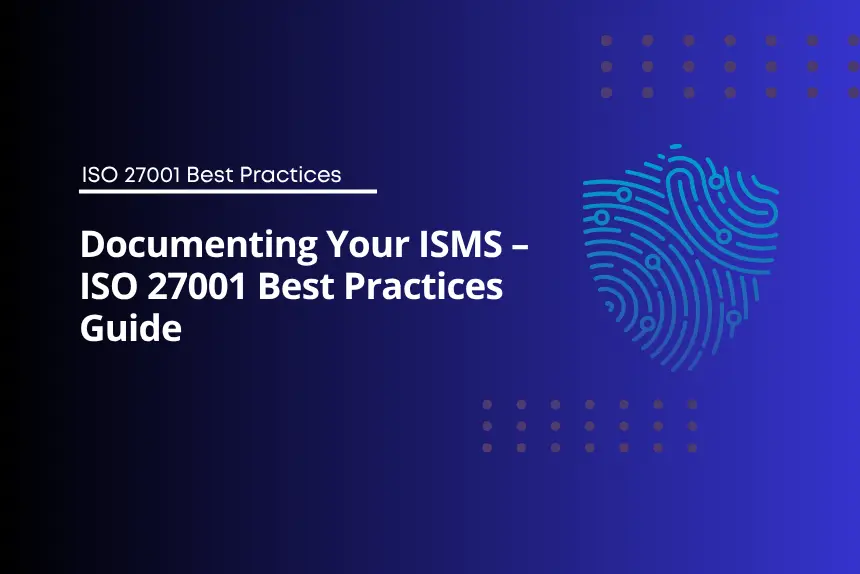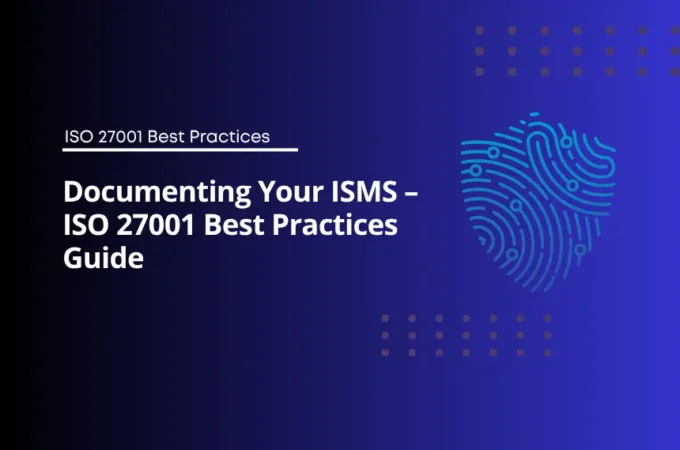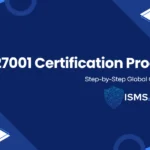Learn how to document your Information Security Management System (ISMS) efficiently with ISO 27001 best practices and templates.
Table Of Content
- Documenting Your ISMS: Best Practices
- Policies and documents that are needed include the scope, risk assessment, and procedures.
- Templates and Standardization: How to Use Templates to Make Things Easier
- Keeping and updating documents— Version Control and Regular Review
- Tips for Making Sure You’re Compliant and Ready for an Audit
Documenting Your ISMS: Best Practices
Good documentation is the most important part of any Information Security Management System (ISMS) that works. ISO 27001 stresses the importance of not only putting in place strong security controls, but also clearly documenting these processes to make sure they are consistent, accountable, and ready for an audit. Good documentation helps your organization follow the rules, share information, and handle security incidents well. If you follow ISO 27001 best practices for documentation, your ISMS will be easier to manage and grow.
Policies and documents that are needed include the scope, risk assessment, and procedures.
ISO 27001 lists a number of important documents and policies that make up the core of your ISMS:
- ISMS Scope: This clearly shows which parts of the organization, processes, and assets are included in your ISMS.
- The Information Security Policy explains the organization’s commitment, roles, responsibilities, and high-level security goals.
- Risk Assessment and Treatment Records: Keep track of how you find, evaluate, and lower risks.
- Statement of Applicability (SoA): This tells you which ISO 27001 controls are in place and why.
- Operational Steps: Detailed steps for access control, incident management, data backup, and other important controls.
- Training and Awareness Records: Proof that staff members have gone through training and awareness programs.
Keeping these documents correct makes sure that everyone in the company understands them and shows that you are following the rules during audits.

Templates and Standardization: How to Use Templates to Make Things Easier
Standardized templates can make paperwork easier, cut down on mistakes, and make things clearer. ISO 27001 best practices say that you should make or use templates for:
- Plans for treating and assessing risks
- Reports of security incidents
- Logs for access control and change management
- Approvals for policies and procedures
Templates help departments stay on the same page and make it easier to make changes. Using ready-made ISO 27001 templates also helps businesses save time and keep their paperwork in order for audits.

Keeping and updating documents— Version Control and Regular Review
Making documentation is not something you can just do and forget about. Best practices for ISO 27001 stress:
- Version Control: Keep track of changes to documents so you can hold people accountable and keep records of the past.
- Periodic Reviews: Check policies, procedures, and risk assessments on a regular basis to make sure they are still useful and up to date.
- Getting ready for an audit: Updated documentation makes sure that your ISMS is ready for both internal and external audits, showing that you are always following the rules.
These processes can be made easier and the risk of having old or inconsistent records can be lowered by using automated document management systems.
Tips for Making Sure You’re Compliant and Ready for an Audit
To properly document your ISMS and stay in compliance:
- Whenever you can, use templates that are the same.
- Clearly spell out who is in charge of managing the documentation.
- Keep track of versions and set up regular reviews.
- Make sure that all of your documents are organized, easy to find, and in line with ISO 27001 controls.
If you follow these ISO 27001 best practices, your ISMS will stay open, easy to audit, and strong, which will help your organization’s overall security goals.





